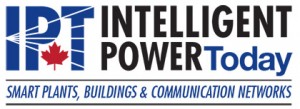Smart Voltage Limiting Devices and IoT Integration
Voltage limiting devices (VLDs) have long been a crucial component of overvoltage protection in power systems. However, the integration of smart technologies and the Internet of Things (IoT) is opening doors for a new generation of VLDs with enhanced functionalities. This article explores the concept of smart VLDs and how their integration with IoT offers real-time monitoring, control, and predictive maintenance capabilities, further improving power system reliability and efficiency.
Enhanced Real-Time Monitoring
Smart VLDs, integrated with IoT technology, enable continuous real-time monitoring of electrical systems. This technological synergy provides operators with instant access to critical data, such as voltage levels, surge events, and device status.
Advantages of Real-Time Data
Immediate Detection: Instantaneous feedback on overvoltage incidents allows for swift actions to mitigate potential damage.
System Analysis: Ongoing monitoring offers valuable insights into system performance and trends, aiding in proactive management.
Advanced Control Features
With IoT integration, smart VLDs offer advanced control mechanisms. Operators can remotely adjust settings, ensuring optimal performance and adapting to changing network conditions.
Benefits of Remote Control
Flexibility: The ability to remotely manage VLDs provides flexibility in responding to system demands and anomalies.
Operational Efficiency: Streamlines the process of system adjustments, reducing the need for on-site interventions and enhancing overall operational efficiency.
Predictive Maintenance
Predictive maintenance has become a reality with the advent of smart VLDs. By analyzing data trends and performance metrics, these devices can predict potential failures before they occur.
Impact on Maintenance Strategies
Reduced Downtime: Early detection of potential issues allows for scheduled maintenance, thereby minimizing unexpected outages.
Cost Savings: Preventive maintenance can significantly reduce the costs associated with emergency repairs and equipment replacements.
IoT Ecosystem Integration
Smart VLDs are part of a broader IoT ecosystem, where they communicate with other smart devices and systems. This integration facilitates a comprehensive approach to electrical system management.
System-Wide Coordination
Holistic Monitoring: Integrating VLDs with the IoT ecosystem enables a holistic view of the electrical network, ensuring that all components work harmoniously.
Enhanced Decision Making: Data from various sources can be analyzed collectively to make informed decisions about system management and optimization.
Challenges and Considerations
While the benefits of smart VLDs and IoT integration are substantial, there are challenges to consider, including cybersecurity risks, data management complexities, and the need for reliable communication networks.
Navigating Potential Issues
Cybersecurity: Implementing robust security measures is critical to protect against potential cyber threats to smart electrical devices.
Data Management: Efficiently handling large volumes of data requires advanced analytics and storage solutions.
Network Reliability: Ensuring continuous and reliable network connectivity is essential for the effective operation of smart VLDs.
Smart voltage limiting devices integrated with IoT technology represent a significant advancement in overvoltage protection. They offer enhanced monitoring, control, and predictive maintenance capabilities, leading to improved system reliability and efficiency. However, addressing the challenges associated with their implementation is crucial for maximizing their benefits. As technology evolves, smart VLDs will continue to play a pivotal role in the dynamic landscape of electrical system protection.
